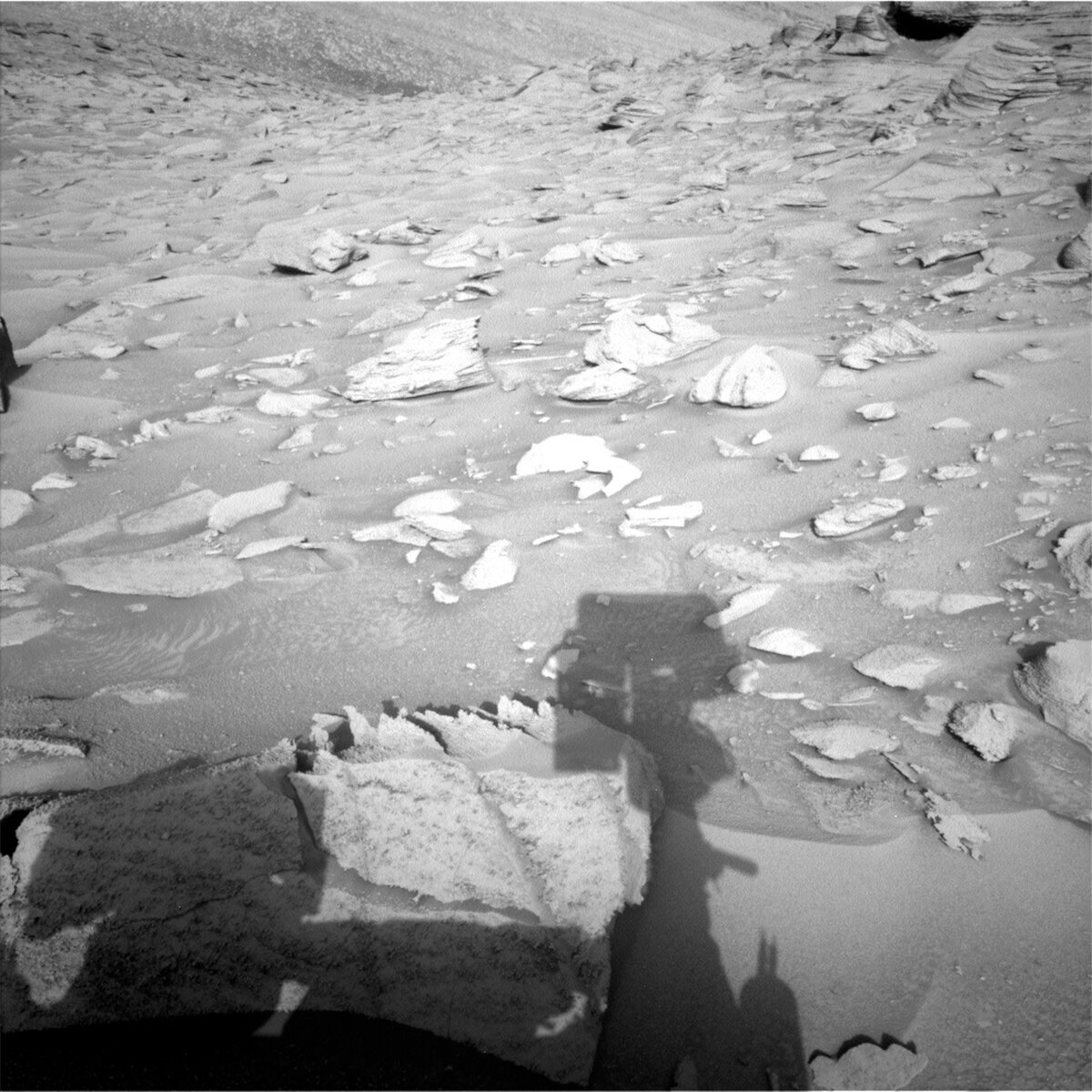Earth planning date: Wednesday, June 21, 2023
Time, it never seems to pass at a constant rate. Today is summer solstice here in the northern hemisphere on Earth; the longest 'day' of the year. It was only fitting time was at the forefront of planning today, particularly at the onset. For starters, in order to better synchronize with Curiosity's workday, our shifts started later than usual in order to permit requisite data from the previous plan to arrive in time for today's planning. In said previous plan, Curiosity completed a drive that would take us on, near, or just past the border of a new quad.
A quad, or quadrangle, is an area outlined where the rover may explore. Several quads were outlined within Gale crater before Curiosity landed, each roughly 1.3 km across. Each quad has a theme based on a significant geologic feature on Earth, and the quads themselves are named after small towns near those geologic features. The regions where the geologic features are found dictates the names given to targets and features explored by the rover in that quad. Many quads are never visited by the rover. In the case of today's plan, we were waiting to see if we had driven far enough to find ourselves in the 'Kalavryta Quad,' named after a town in Greece, due west of Athens and near the Chelmos-Vouraikos UNESCO Global Geopark, a region that consists of 40 unique geological sites including caves, karstic springs, rivers, alpine lakes, and fossil sites. While we waited patiently, eagerly, and excitedly for rover localization to be confirmed, I found myself envisioning the comical scenario of the quad border being within (rover) arm's reach. Then, when the arm was deployed for contact science, the turret-mounted instruments 'cross the line' into the new quad first, like a runner leaning forward across the finish line in a race.
It did not come to such a scenario, however, as our previous drive of approximately 16 m successfully took us into the Kalavryta quad. And with that, we had a fresh set of new names to choose from, including target names such as 'Kastria Spring,' 'Feneos,' 'Niamata,' and 'Kerpini.' In today's two-sol plan, Curiosity started by completing ChemCam and Mastcam activities, including analyses of Feneos. A DAN passive analysis and environmental activities followed with the rover then brushing the Kastria Spring target before imaging with MAHLI and commencing a two-spot APXS analysis. Curiosity also completed a MAHLI mosaic of the Feneos target.
The second sol of the plan focused on additional imaging activities, with Mastcam images of Niamata, Kerpini, and Kastria Spring, the latter of which included images before and after analysis by the ChemCam laser. The rover then completed yet another drive (with a planned distance of ~40 m) and acquired the necessary post-drive imaging before the decisional MRO pass which will relay the data necessary before the next tactical day kicks off.
Written by Scott VanBommel
from NASA Mars Rover Curiosity: Mission Updates https://ift.tt/mq4RT29

Comments
Post a Comment